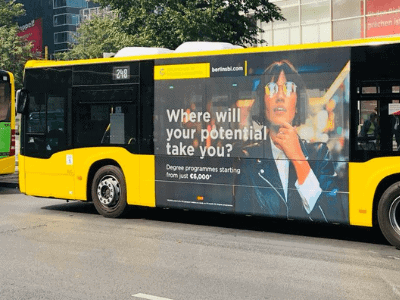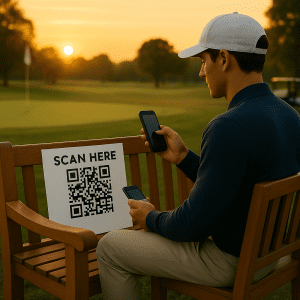In Vehicle Advertising: A Closer Look at Sustainability Issues
In vehicle advertising has surged in popularity in recent years, with marketers drawn to the high visibility and mobile reach of vehicle wraps. Whether wrapped taxis in downtown Chicago or branded delivery vans in Miami, the format offers wide geographic exposure. But while in vehicle ads may appear effective on the surface, they carry an often-overlooked consequence: environmental impact.
This blog explores the ecological footprint of in vehicle advertising, focusing specifically on vinyl vehicle wraps, their production, disposal, and sustainability implications. We’ll also examine why brands that value corporate responsibility should consider more eco-conscious alternatives like Adzze’s in-hand advertising formats.
In Vehicle Advertising and the Lifecycle of Vinyl Wraps
Vinyl wraps are the most common material used for in vehicle advertising. Made primarily from polyvinyl chloride (PVC), these wraps are applied to car exteriors and can last from 3 to 5 years depending on exposure and maintenance.
But what happens before and after that lifespan?
Production Phase:
Requires fossil fuel-derived plastics
Involves chemical processing (plasticizers, UV stabilizers, dyes)
Emits volatile organic compounds (VOCs) during printing and lamination
Disposal Phase:
Vinyl wraps are not biodegradable
Most wraps are not recyclable through municipal recycling systems
Often end up in landfills or incinerated, releasing toxins into the environment
For each wrapped car in an in vehicle ad campaign, multiple square meters of plastic go to waste, with limited or no end-of-life recovery plans.
In Vehicle Ads: Visibility at the Cost of the Planet?
Many marketers praise in vehicle ads for their cost-effectiveness and constant visibility. A moving vehicle essentially becomes a roaming billboard, seen by thousands of drivers and pedestrians daily. But few question the true cost—particularly when scaled across entire fleets.
Consider a campaign that wraps 50 delivery vans with new branding every two years:
Roughly 5,000–7,000 square feet of vinyl used
That’s equivalent to over 100 large billboards worth of plastic waste
Very few providers offer take-back or recycling programs for old wraps
If your brand claims sustainability as a value, in vehicle advertising with PVC wraps may send the wrong message—visibly and invisibly.
In Vehicle Advertisement and Consumer Perception
Today’s consumers are more eco-conscious than ever. Greenwashing—where brands claim environmental benefits without backing them up—is under increasing scrutiny.
If your in vehicle advertisement touts sustainability or eco-friendliness while being wrapped in non-recyclable plastic, consumers may notice the contradiction.
A 2023 survey by NielsenIQ found:
78% of consumers say a sustainable lifestyle is important to them
62% of consumers consider a brand’s environmental impact before purchasing
Every touchpoint, including in vehicle ads, contributes to your brand’s credibility—or its erosion.
In Vehicle Ads vs. In-Hand Media: A Greener Alternative
Marketers looking to maintain reach without compromising sustainability should consider in-hand advertising options. Adzze offers a range of eco-friendly media formats that avoid the environmental baggage of vehicle wraps:
Examples include:
Coffee sleeves made from recycled paper
Bar coasters designed for single-use branding with biodegradable materials
Pizza boxes that double as local geo-targeted ads
Unlike in vehicle ads, these formats:
Avoid plastic waste
Reach consumers during moments of attention and relaxation
Offer QR code tracking to measure engagement
Can be recycled or composted after use
The Cost Breakdown: In Vehicle Advertising vs. Sustainable Formats
Format | Average Lifespan | Material Used | Disposal Method | Environmental Score |
Vehicle Wrap | 3–5 years | PVC plastic | Landfill/incinerated | ❌❌ |
Coffee Sleeve Ad | 1 use | Recycled paper | Compost/recycle | ✅✅✅ |
Pizza Box Ad | 1 use | Cardboard | Compost/recycle | ✅✅✅ |
Bar Coaster Ad | 1 use | Biodegradable pulp | Compost/recycle | ✅✅✅ |






